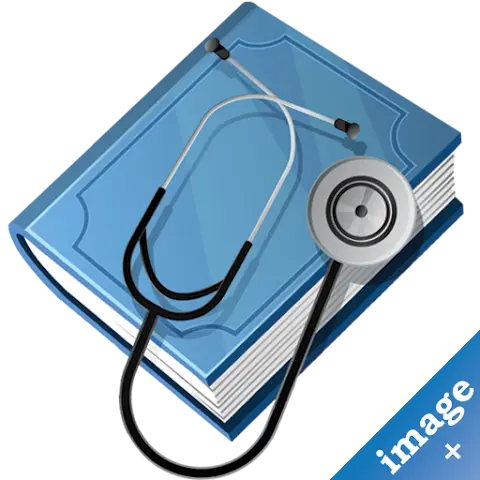Cancer, acute myelogenous leukemia
DEFINITION
Acute myelogenous leukemia (AML) is a Cancer of the blood and bone marrow — the spongy tissue inside bones where blood cells are made. The word "acute" in acute myelogenous Leukemia denotes the disease's rapid progression. It's called myelogenous Leukemia because it affects a group of white blood cells called the myeloid cells, which normally develop into the various types of mature blood cells, such as red blood cells, white blood cells, and platelets. Acute myelogenous Leukemia is also known as acute myeloid Leukemia, acute myeloblastic Leukemia, acute granulocytic Leukemia, and acute nonlymphocytic Leukemia.
SYMPTOMS
General signs and symptoms of the early stages of acute myelogenous Leukemia may mimic those of the Flu or other common diseases. Signs and symptoms may vary based on the type of blood cell affected. Signs and symptoms of acute myelogenous Leukemia include:
- Fever
- Bone pain
- Lethargy and fatigue
- Shortness of breath
- Pale skin
- Frequent infections
- Easy bruising
- Unusual bleeding, such as frequent nosebleeds and bleeding from the gums
When to see a doctor: Make an appointment with a doctor if you develop any signs or symptoms that seem unusual or that worry you.
CAUSES
Acute myelogenous Leukemia is caused by damage to the DNA of developing cells in your bone marrow. When this happens, blood cell production goes awry. In most cases, it's not clear what causes the DNA mutations that lead to Leukemia. Radiation, exposure to certain chemicals, and some chemotherapy drugs are known risk factors for acute myelogenous Leukemia.
RISK FACTORS
Factors that may increase your risk of acute myelogenous Leukemia include:
- Increasing age.
- Your sex.
- Previous Cancer treatment.
- Exposure to radiation.
- Dangerous chemical exposure.
- Smoking.
- Other blood disorders.
- Genetic disorders.
Many people with AML have no known risk factors, and many people who have risk factors never develop the Cancer.
PREPARING FOR YOUR APPOINTMENT
If you have signs and symptoms of acute myelogenous Leukemia, you're likely to start by seeing your family doctor or a general practitioner. Because appointments can be brief, it's a good idea to be well prepared. Here's some information to help you get ready:
What you can do:
- Be aware of any pre-appointment restrictions.
- Write down any symptoms you're experiencing.
- Write down key personal information.
- Make a list of all medications.
- Consider taking a family member or friend along.
- Write down questions to ask your doctor.
What to expect from your doctor: Your doctor is likely to ask you a number of questions related to your symptoms.
What you can do in the meantime: Avoid activities that worsen your signs and symptoms.
TESTS AND DIAGNOSIS
If you have signs or symptoms of acute myelogenous Leukemia, your doctor may recommend you undergo diagnostic tests including blood tests, bone marrow test, and lumbar puncture (spinal tap).
Determing your AML subtype: Further tests may be needed to determine the extent of the Cancer and classify it into a more specific AML subtype.
TREATMENTS AND DRUGS
Treatment of acute myelogenous Leukemia depends on several factors including the subtype of the disease, your age, your overall health, and your preferences. Treatment usually falls into two phases: remission induction therapy and consolidation therapy.
Therapies used in these phases include chemotherapy, other drug therapy like Arsenic trioxide and stem cell transplant.
ALTERNATIVE MEDICINE
No alternative treatments have been found helpful in treating acute myelogenous Leukemia. Some complementary treatments may relieve signs and symptoms due to Cancer or Cancer treatment like acupuncture, aromatherapy, massage, meditation, and relaxation exercises.
COPING AND SUPPORT
Acute myelogenous Leukemia is an aggressive form of Cancer that typically demands quick decision making. Here are some tips for coping:
- Learn enough to make decisions about your care.
- Lean on family and friends.
- Take care of yourself.
QUESTIONS
- What is Acute Myelogenous Leukemia?
Acute Myelogenous Leukemia (AML) is a type of Cancer affecting the blood and bone marrow.
- What are the common symptoms of AML?
Common symptoms include fever, bone pain, fatigue, shortness of breath, pale skin, frequent infections, easy bruising, and unusual bleeding.
- What are some risk factors for developing AML?
Risk factors include increasing age, sex (men are more likely), previous Cancer treatment (chemotherapy/radiation), exposure to radiation/chemicals like benzene, smoking, other blood disorders/genetic disorders.
- How can one prepare for an appointment related to AML?
Be aware of any restrictions before the appointment; write down symptoms; note key personal information; list all medications; consider taking someone along; prepare a list of questions for the doctor.
- What diagnostic tests are used for AML?
Blood tests are commonly done along with bone marrow tests and sometimes lumbar puncture (spinal tap).
- What is involved in determining an AML subtype?
Further testing is needed to classify AML into specific subtypes based on cell characteristics seen under a microscope.
- What are the main phases of treatment for AML?
Treatment generally involves remission induction therapy followed by consolidation therapy aimed at destroying remaining leukemia cells.
- Are there alternative treatments for AML?
No alternative treatments have been found effective against AML but complementary therapies like acupuncture or meditation may help manage symptoms.
- How can individuals cope with an AML diagnosis?
Learning about their specific type of leukemia, seeking support from family/friends, taking care of themselves through hobbies or relaxation techniques can help cope with an AML diagnosis.
- What is stem cell transplant used for in AML treatment?
Stem cell transplant helps re-establish healthy stem cells by replacing unhealthy bone marrow with leukemia-free stem cells that will regenerate healthy bone marrow in consolidation therapy for AML treatment.
